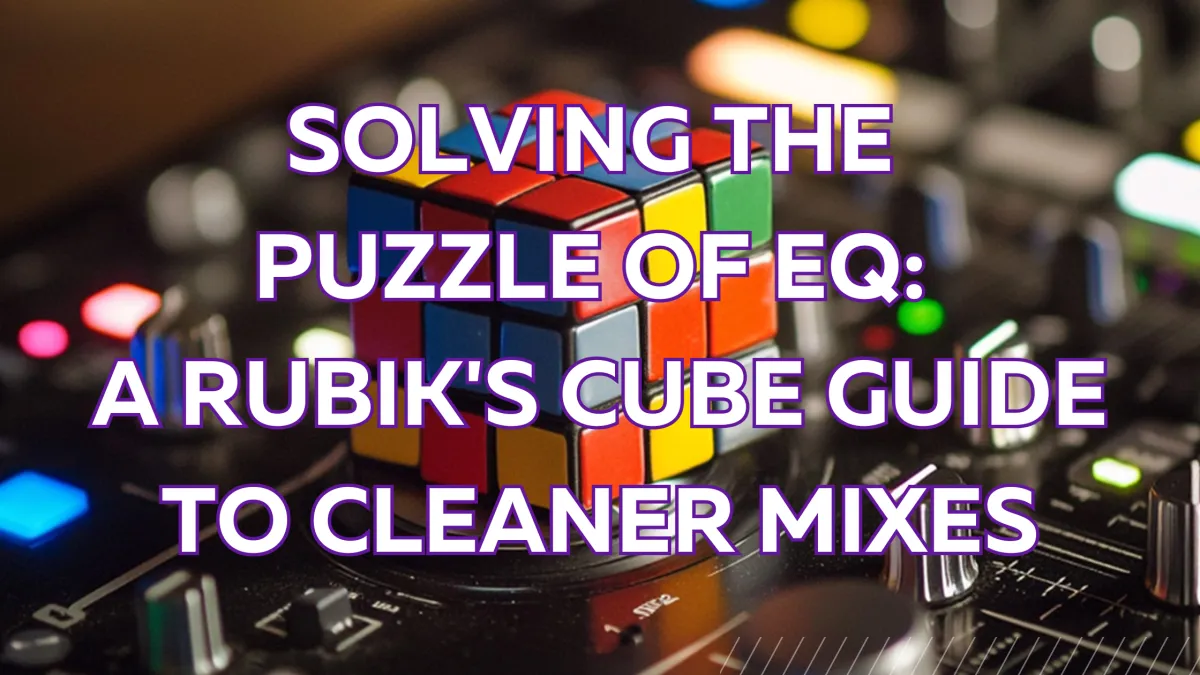
Solving the Puzzle of EQ: A Rubik's Cube Guide to Cleaner Mixes
The Art of the Mix: How to Keep Your Dance Floor Alive
"Music is the mediator between the spiritual and the sensual life.”
— Ludwig van Beethoven
Have you ever wondered what EQ knobs on a mixer and a Rubik’s Cube have in common?
No, this isn’t a cheesy joke about how the more you fiddle with them, the harder it gets! It’s actually a handy way to visualise how EQ works and how it impacts your mix.
For those of us who mix regularly, isolating sounds within tracks feels like second nature. EQ is one of our most vital tools in shaping a mix. However, for many listeners without musical training, the soundscape isn’t so easily dissected—they hear the music as one cohesive "thing."
Imagine that "thing" as a Rubik’s Cube.
Understanding the Cube
To an untrained ear, music is like a solved cube: all the pieces fit together seamlessly, even if they don’t consciously process why. They might not know how to articulate that something sounds “off,” but their brain can still sense it, often unconsciously.
The EQ on a mixer allows us to fine-tune the cube’s individual pieces. Without proper EQing, the mix feels disorganised—like a jumbled-up Rubik’s Cube. This creates a less immersive and enjoyable experience for the listener, who subconsciously struggles to process the chaotic sound.
In this image you can see what i'm harping on about:

• Top Section (All EQ knobs flat, like a scrambled cube):
A mix without any EQ adjustments can sound muddy, noisy, and chaotic. The individual elements clash, creating a "phasing" effect that makes the mix unpleasant.
• Middle Section (Bass EQ turned down, like a partially solved cube):
Although it sounds nicer than the top mix there will still be midrange clashes that might still muddy the sound, and the top end could lose clarity, making hi-hats and rides feel dull.
• Bottom Section (All EQ knobs adjusted, like a solved cube):
Nailed it! A balanced EQ ensures every element has its place, creating a harmonious and pleasing mix. Our hypothetical untrained listener, doesn’t know what you did, but they’re loving it.
Why EQ Matters
EQ is more than just a tool; it’s your mix’s lifeline. Each knob controls a specific frequency range:
• Bass (Low frequencies): Adds or removes depth and warmth.
• Mid (Mid frequencies): Controls the body of the mix but can clash when overused.
• Treble (High frequencies): Adds clarity and sparkle but can cause harshness if overdone.
When frequencies clash, they create an unpleasant, muddy mix. Subtle adjustments can prevent this, allowing your tracks to sit neatly alongside each other.
How to Check Your Mix
If your mixes aren’t sounding as clean as you’d like, try this:
- Does your mixer look like the top image?
If it does its gonna be phasing and muddy and noisy and messy and not a particularly pleasant experience.
- Does it resemble the middle image?
You’re on your way! You’re probably having mid range clashes making it sound muddy and phasing in the top end taking all that pretty sharpness out of your rides and high hats. Focus on balancing the midrange and treble for clarity.
- Does it match the bottom image?
you’re nailing it! You know you are ;-) as far as EQ is concerned you’ve got it sussed! Thank you for taking the time to red this though ;-)
EQing isn’t just about making music sound better—it’s about giving your audience the best experience possible. A well-EQed mix allows the listener to fully immerse themselves in the music, without their brain working overtime to process the chaos.
So, next time you’re mixing, think about Buddy. They don’t know the technical details, but they’ll definitely feel the difference. And when they’re lost in the music, you’ll know you’ve done your job.
Much love—and happy mixing!
